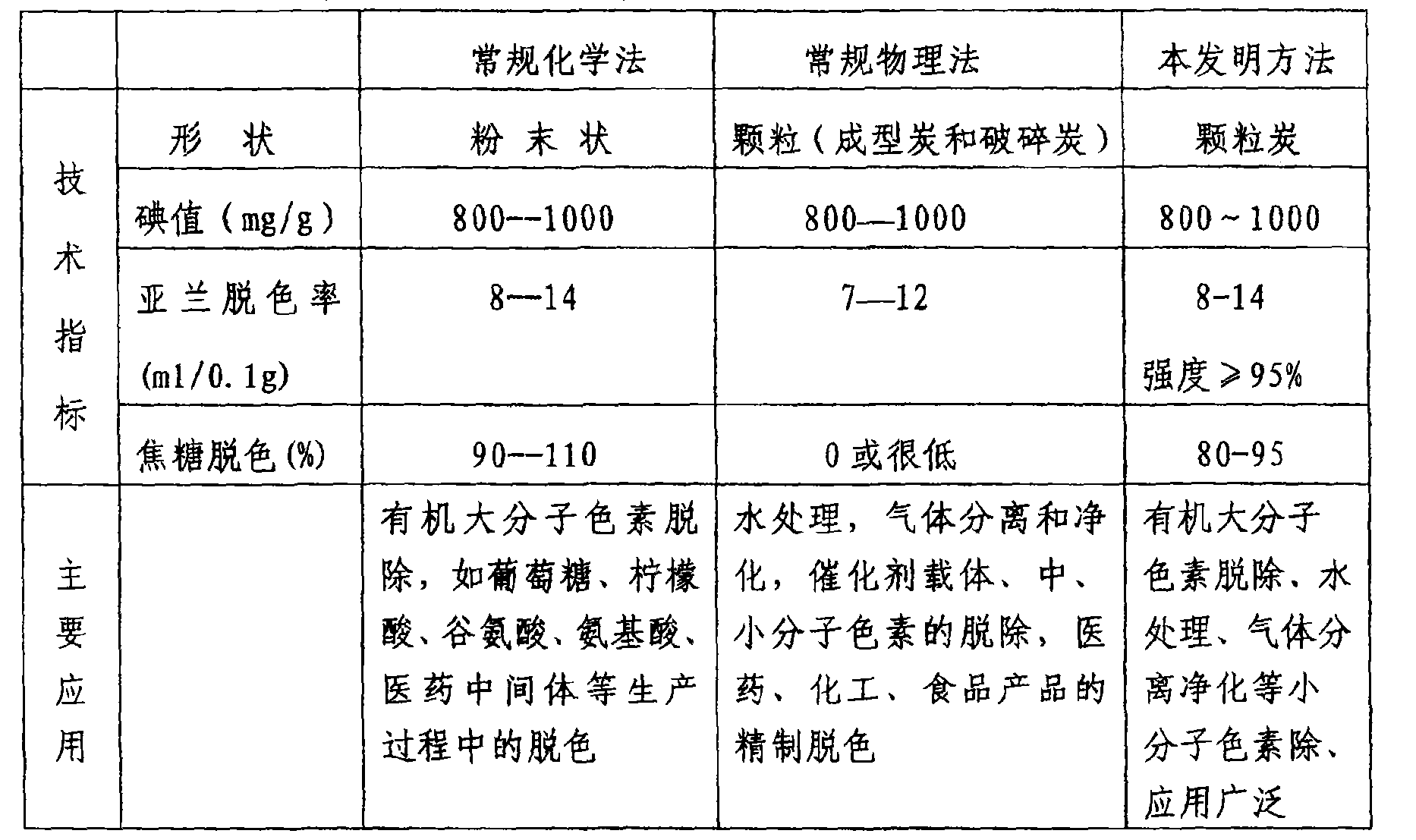Granule decoloration active carbon and preparation method thereof
A technology of activated carbon and granules, used in chemical instruments and methods, other chemical processes, etc., can solve the problems of incompatibility with high-tech products and modern enterprise management, no caramel decolorization performance, and weak ability to remove organic macromolecular pigments. Achieve excellent ability to remove macromolecular pigments, reduce decolorization carbon consumption and sewage discharge, and achieve excellent caramel decolorization performance.
- Summary
- Abstract
- Description
- Claims
- Application Information
AI Technical Summary
Problems solved by technology
Method used
Image
Examples
Embodiment 1
[0028] Embodiment 1: put 100kg of raw material apricot shells into a carbonization furnace and carbonize at 500±50°C for 3 hours. After cooling to room temperature, the carbonized material is put into an impregnation tank. The impregnation solution is 4kg85% phosphoric acid, 5kg sodium hydroxide, 2.5 kg of magnesium oxide, 4.5kg of zinc chloride and 100kg of water, prepared into an impregnating aqueous solution, impregnating the carbonized material (the liquid level standard of the impregnating solution is - subject to immersion in the carbonized layer), and soaking the impregnated carbonized material at room temperature for 6-8 Hours; then dry the impregnated carbonized material in a drying furnace at 400±50°C; the carbonized material carrying the impregnated material is activated at 800±50°C for 8-12 hours under the condition of passing through superheated steam, and then The activated material is pickled with 10% hydrochloric acid aqueous solution, and the pickled material i...
Embodiment 2
[0029] Example 2: Use wood tar as a binder and add coal powder to press it into a columnar shape. Take 100kg of the pressed material and carbonize it in a carbonization furnace at 500±50°C for 3 hours. After cooling to room temperature, put the carbonized material into a dipping tank and soak Use 4kg of 85% phosphoric acid, 4kg of sodium hydroxide, 3kg of magnesium oxide, 5kg of zinc chloride and 100kg of water to prepare an impregnating aqueous solution to impregnate the carbonized material (the liquid level standard of the impregnating solution is - subject to the immersed carbon layer) , soak at room temperature for 6 to 8 hours; then dry the impregnated carbonized material in a drying furnace at 400±50°C; ℃ activation treatment for 8-12 hours, then pickled with 10% hydrochloric acid aqueous solution, then dried at 400±50 ℃ for 1-2 hours, and crushed to 20-60 mesh particles.
[0030] Process parameter experimental data in the embodiment of the present invention is expressed...
PUM
| Property | Measurement | Unit |
|---|---|---|
| decolorization rate | aaaaa | aaaaa |
Abstract
Description
Claims
Application Information
 Login to View More
Login to View More - R&D
- Intellectual Property
- Life Sciences
- Materials
- Tech Scout
- Unparalleled Data Quality
- Higher Quality Content
- 60% Fewer Hallucinations
Browse by: Latest US Patents, China's latest patents, Technical Efficacy Thesaurus, Application Domain, Technology Topic, Popular Technical Reports.
© 2025 PatSnap. All rights reserved.Legal|Privacy policy|Modern Slavery Act Transparency Statement|Sitemap|About US| Contact US: help@patsnap.com



